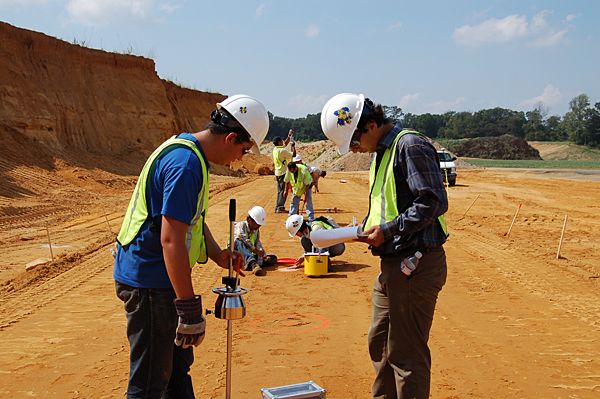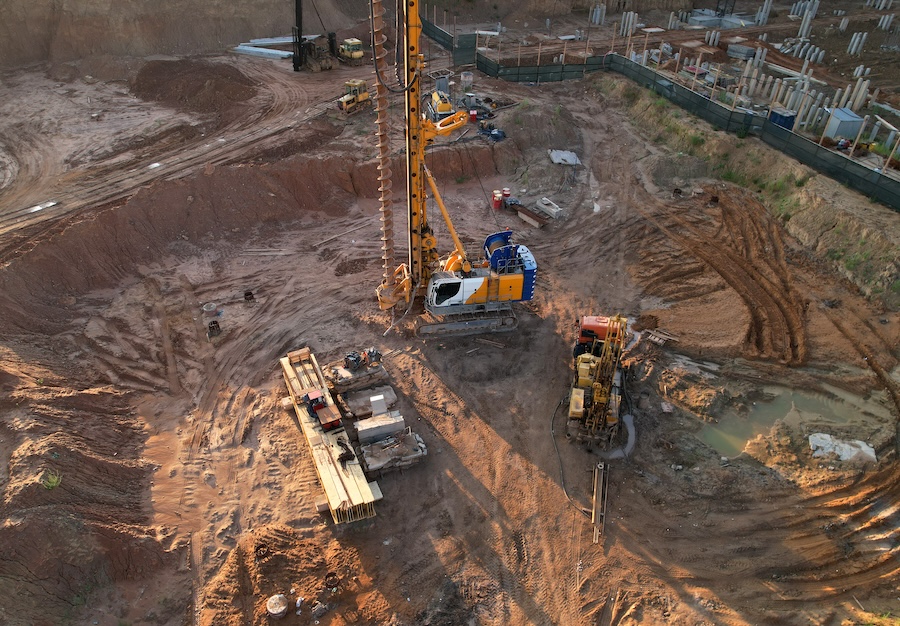Why Employing a Geo Tech Engineer is Critical for Facility Construction Projects
Wiki Article
The Significance of Soil Evaluation and Site Investigation in the Geotechnical Market: Ensuring Security and Stability in Civil Design
In the geotechnical market, dirt evaluation and website investigation are foundational components that underpin the safety and security and stability of civil engineering projects. By completely understanding soil properties, engineers can preemptively attend to prospective difficulties, eventually securing architectural integrity.Comprehending Soil Features
In the realm of geotechnical design, a detailed understanding of soil properties is extremely important for educated decision-making and efficient job layout. The characterization of dirt involves the evaluation of various physical and mechanical residential properties, such as grain size distribution, plasticity, shear, cohesion, and permeability strength. These residential or commercial properties determine just how soil acts under different loading problems and ecological influences, making them vital for analyzing site suitability for construction tasks.Soil classification systems, such as the Unified Dirt Classification System (USCS) and the AASHTO classification, offer frameworks for grouping soils based upon their attributes. This classification aids designers in predicting actions under stress, water flow, and settlement, therefore affecting design options and construction techniques.
Additionally, the interaction in between soil and surrounding structures is an essential factor to consider in geotechnical engineering. Recognizing dirt buildings assists recognize prospective obstacles, such as liquefaction in earthquake-prone locations or extreme negotiation in soft dirts. By thoroughly assessing these buildings, geotechnical designers can make certain the security, stability, and long life of structures, inevitably adding to the overall durability of civil design projects.
Methods of Soil Evaluation

In-situ tests include techniques such as Common Penetration Tests (SPT), Cone Penetration Tests (CPT), and vane shear examinations. SPT assesses the resistance of soil to infiltration, providing data on thickness and strength, while CPT gauges dirt resistance and pore stress, producing constant profiles of soil stratigraphy. Vane shear tests are especially helpful for assessing the shear strength of natural dirts.
Lab tests complement these in-situ evaluations and include sampling dirt for regulated screening. Typical research laboratory approaches include Atterberg restrictions, which identify the plasticity attributes of fine-grained soils, and compaction examinations, which assess moisture-density connections. Added examinations, such as triaxial compression and unconfined compression tests, are performed to assess the shear toughness of soil samples under different problems.
Function of Website Examination
Site examination plays a pivotal duty in the geotechnical design process, working as the foundation for recognizing subsurface conditions. This thorough evaluation involves methodical exploration of dirt and rock properties, groundwater degrees, and other geological attributes that influence task security and security.Usually, site examinations encompass a selection of methods, including exploration boreholes, tasting, and in-situ testing. These approaches offer essential data on the mechanical and physical qualities of the ground, notifying designers about prospective challenges such as dirt negotiation, bearing ability, and incline stability.
Furthermore, website investigation promotes the recognition of dangerous materials and impurities, making it possible for the application of appropriate removal steps. By establishing an accurate subsurface profile, site investigations help to reduce dangers related to building and construction, making certain that tasks abide by safety and security requirements and regulations.
The searchings for from a complete site examination not only overview style choices yet also affect building and construction methodologies and timelines. In summary, the importance of site investigation can not be overstated; it is an essential action in the geotechnical engineering process, laying the groundwork for effective task execution while prioritizing public safety and security and environmental integrity.
Effect on Job Layout
A comprehensive understanding of dirt qualities dramatically affects job design in the geotechnical industry. Dirt analysis informs engineers concerning the mechanical residential or commercial properties, composition, and behavior of the ground, which are critical consider establishing the usefulness and safety geo tech engineer and security of a building job. Accurate data on dirt leaks in the structure, toughness, and compressibility enable the development of reliable foundation layouts, making sure that structures are properly supported and steady throughout their life expectancy.Moreover, the visibility of pollutants or unsteady soil layers can motivate adjustments in job style, such as selecting different building and construction approaches or products. This aggressive approach reduces dangers associated to soil negotiation, too much loading, or lateral movement, therefore securing both the stability of the structure and public safety and security.
The integration of soil analysis into job style additionally helps with compliance with governing needs and ecological factors to consider. By resolving soil-related obstacles early in the layout procedure, designers can maximize source allowance and minimize possible delays and costs related to unforeseen site conditions. Ultimately, complete dirt analysis improves the total quality and sturdiness of civil design tasks, leading to even more sustainable and resilient facilities.
Study and Instances
Showing the essential duty of dirt evaluation in the geotechnical market, different situation researches highlight its influence on task end results. One notable example is the construction of a skyscraper in midtown Los Angeles, where considerable dirt screening exposed unsteady subsurface problems. consulting engineer. By recognizing the visibility of large clay, designers had the ability to upgrade the structure, incorporating deep pilings that guaranteed stability and safety and security, ultimately avoiding potential architectural failures
Finally, a dam job in the Southeast faced hold-ups as a result of unanticipated soil erosion issues. Comprehensive soil evaluation permitted engineers to carry out reliable stablizing methods, making certain that the dam satisfied safety and security regulations while adhering to the job timeline. These cases emphasize the requirement of extensive dirt evaluation and site examination, highlighting their vital role in attaining successful and secure civil engineering tasks.
Final Thought
Finally, dirt analysis and website investigation are fundamental elements of the geotechnical industry, playing a critical function in guaranteeing the safety and security and stability of civil engineering tasks. By offering vital information on dirt properties and subsurface conditions, these procedures educate structure style and building approaches. Furthermore, detailed examinations contribute to hazard identification and danger mitigation, ultimately enhancing the longevity and toughness of frameworks while enhancing resource appropriation throughout the task lifecycle.In the geotechnical market, soil evaluation and site examination are foundational aspects that underpin the safety and security of civil engineering jobs. Understanding dirt buildings assists recognize potential obstacles, such as liquefaction in earthquake-prone areas or too much settlement in soft soils. SPT examines the resistance of soil to infiltration, offering information on thickness and strength, while CPT gauges soil resistance and pore pressure, producing continual accounts of soil stratigraphy. These instances underscore the necessity of comprehensive dirt evaluation and website investigation, highlighting their necessary function in achieving secure and effective civil engineering jobs.
In verdict, soil analysis and website investigation are essential parts of the geotechnical industry, playing a critical duty in ensuring the safety and stability of civil engineering tasks.
Report this wiki page